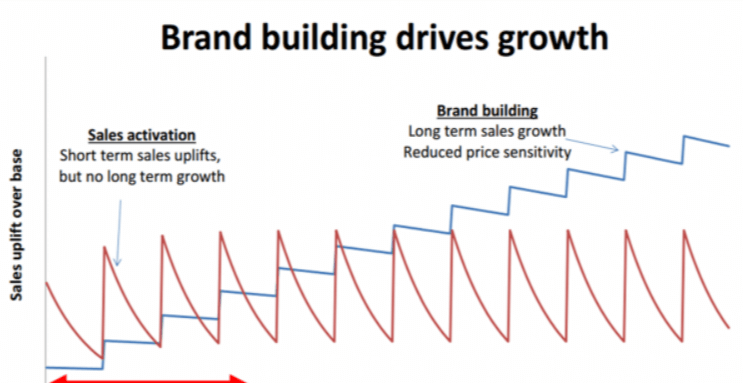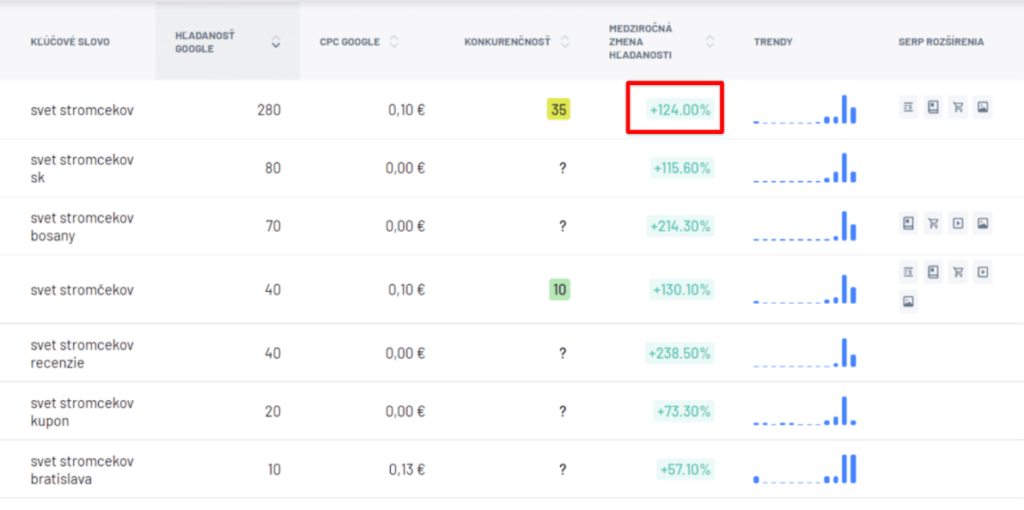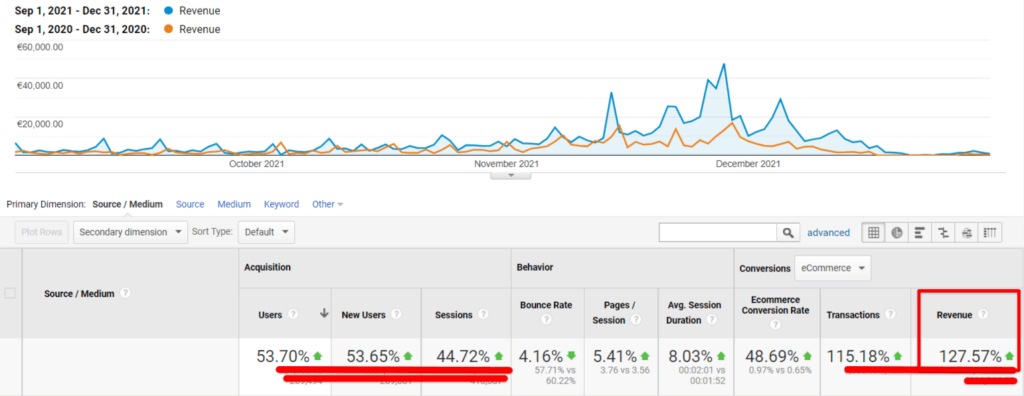The impact of brand campaigns on performance channels
This has been the third consecutive pre-Christmas season we have worked with Svet Stromčekov (World of Christmas Trees). Year after year, we keep setting more ambitious goals in terms of orders and sales achieved by the client. Year after year, we have been successful in meeting and even significantly exceeding these goals.
For three years in a row, we’ve focused on performance channels, in particular paid campaigns, and we’ve also worked on organic search results.
Last season, we also decided to invest part of the budget in branding. We opted to use the Google Marketing Platform for this. Let’s have a look at the results this accomplished for these online shop owners.
For three seasons in a row, we’ve done everything that paid campaigns and their ad formats offer in the e-commerce segment as a part of our efforts for Svet Stromčekov. The success of our paid campaigns was mainly based on the high demand that occurs every year in the segment, and for these products naturally.
It’s always crucial to follow up on this increased demand with our paid campaign to drive the increased demand that is “available” to us in the form of users searching for our keywords in Google to our product landing pages. We did this very proactively thanks in particular to:
- Smart Shopping campaigns – automated campaigns from Google that use artificial intelligence and run on the product XML feed.
- Ongoing discounts and promotions – within performance campaigns, we took a very proactive role in communicating ongoing discounts and promotions by the client. We engaged potential customers face to face. We offered them ongoing discounts and promotions, and we communicated this very diligently in our ads, making them more prominent. This can also be largely automated, for instance an XML feed populated with the right attributes can help in this regard. So can the Ad Customizer tool, allowing us to rapidly change the communication within our ad texts in Google search.
Success came in the form of winning the Performance category in the Digital PIE competition of Slovak agencies. We also managed to distinguish ourselves among European agencies at the European Search Awards 2021. You can read about our case study here: Svet Stromčekov: Rocket growth and successful expansion to 6 international markets.
What was our aim?
Last season, we decided with our client to invest a significant portion of our media budget in branding, which would drive our performance channels to be able to increase the demand for our client’s brand in Google search. These would generate more demand for the brand keyword, which would also start to direct unpaid traffic to the online shop.
For instance, via organic search results or direct traffic, which is the best thing that can happen to your website long term. Alternatively, via inexpensive clicks from brand campaigns in Google search.
I’m sure you’re familiar with the now-iconic chart from the Les Binet and Peter Field 2013 study highlighting the difference between short-term performance-focused campaigns and long-term brand campaigns from a growth perspective.
We didn’t opt for any long-term, months long campaign – this chart became more of an inspiration so the client would invest a portion of their marketing budget this season into branding campaigns, which are so important for growth and brand recognition:

Our main objective was therefore:
- increasing direct traffic
- increasing the search volume for the brand keyword in organic search results
What did we decide to use?
We created 3 video creatives within the branding campaign suitable for video advertising on YouTube. A 25-second version of the video, and a 15-second and 6-second non-skippable format for the bumper. We also had accompanying banners based on this creative ready to deploy.
A great tool to manage your video and banner ads into one directed campaign using the same media budget is Google Display and Video 360, which are part of the Google Marketing Platform ecosystem. It’s utilised in particular by larger advertisers.
Our previous experience with buying programmatic advertising for brand campaigns had been mainly via Adform. This time, we decided to go with a Google product.
Benefits of Google Display and Video 360
Google DV360 allows you to link your YouTube video campaigns with your Google Display Network ads, which is a huge advantage for this kind of brand campaign. You can evaluate campaigns using the same system, within a single campaign.
We also decided to use the option of combining the audiences of YouTube users and banner campaigns – this feature is currently not available in Google Ads. We then targeted the users who viewed our videos as YouTube ads with our accompanying banners. This is called post-view retargeting, which helps users who don’t know your brand yet to better consume the entire campaign and ensure better continuity between the video and the landing page.
Proposal
The objective was to use our three video formats within YouTube video advertising to increase and activate interest in our brand. We then followed up with the users who viewed our video ads and reminded them with banner ads.
Targeting
We didn’t rely on classic retargeting at all, and decided to focus purely on new users. We targeted in-market audiences based on their purchase intent. In-market audiences allow you to find customers who are searching for your products or services and are actively considering buying them or something similar. We settled on two audiences, namely:
- Christmas Items & Decor
- Holiday Items & Decorations
We also targeted our creatives at users in specific categories. Audiences by category allow you to target groups of people with specific interests, intents, and demographics as estimated by Google. You can choose from a wide range of categories – including sports fans, travellers, people buying cars, and more. From these, we also chose two categories that were very relevant from our perspective with respect to our client’s product:
- Home & Interior Decor
- Christmas
What was the result?
As mentioned above, the expected result was to significantly increase direct traffic to the site. This increased by 78 % year-on-year in the pre-Christmas period. In the graph, you can also see the correlation between the launch of the brand campaigns and the increase in “direct” channel traffic:

The second metric we can use to evaluate our objective is the search volume, or the number of impressions of our brand keyword in Google’s organic search results.
Data from the Google Search Console shows a year-on-year increase of 124 %:

Google search ad impressions for branded keyword ads increased by 73 % year-on-year. Similarly to the direct traffic that led to the site, we see an anomaly in the volume of impressions coinciding with the brand campaign period:

We can also observe anomalies in traffic in the graph below. In the three previous years, when we only focused on performance channels, there were no such noticeable fluctuations in the website traffic. This is the natural and expected impact of the brand campaign on overall website traffic:

Without disclosing the exact year-on-year increase in absolute figures, we recorded a 127 % year-on-year increase in online shop sales for the entire website across all channels on the Slovak market.
Development of online shop revenues over the last four Christmas seasons:

Year-on-year comparison of last season’s revenue, following brand demand activation:

Conclusion
If you’re an online shop owner or marketer, don’t just focus on performance-type campaigns. Activating your brand is key in bringing unpaid or inexpensive paid traffic to your online shop. Assuming that your online shop is competitive (wide product range, product prices) and has a convenient shopping process from the user’s perspective, an increase in your online shop revenue is expected to occur as a desirable secondary effect of activating your brand.
